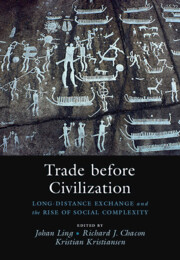The use of marine shells in the manufacture of bracelets and beads is a well-attested phenomenon of the Neolithic and Chalcolithic periods of Western Anatolia, the Aegean, and the Balkans. The site of Gökçeada-Uğurlu, located on an island in the Aegean between mainland Europe and Anatolia, shows evidence for the manufacture and use of bracelets and beads from Spondylus and Glycymeris shell. This use of personal ornamentation ties the site into one of the widest material culture production and trade networks of the prehistoric period. This article explores the possible role of, and influences on, an island site within the wider context of long-distance exchange. The life history of shell products is investigated, showing that a bracelet may have gone through processes of transformation in order to remain in use. The article also questions whether there was a relationship between the use of marine shell and white marble from which similar products were manufactured in contemporary contexts. In its conclusions the article addresses the value of materials and of the personal ornaments they were used to make.


